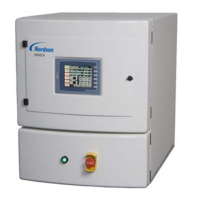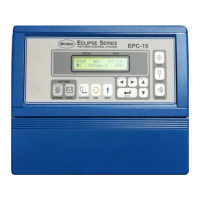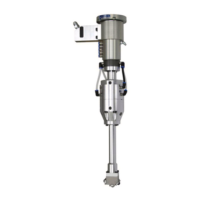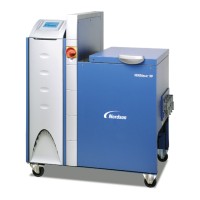Hardware Installation and Setup
3-18
Part 1120130
E 2011 Nordson Corporation
To connect applicators
Observe the following guidelines:
S AltaBlue melters with 120‐ohm nickel sensors support all Nordson T‐style
applicators. AltaBlue melters with 100‐ohm platinum sensors support all
Nordson M‐style applicators.
S For information about choosing the most appropriate Nordson hot melt
applicator for your manufacturing process, refer to the latest edition of
Nordson's hot melt dispensing equipment Replacement Parts Catalog or
contact your Nordson representative. Refer to Appendix A, Calculating
Melter Power Requirements, for information about how to calculate the
power required by Nordson hot melt applicators.
S Refer to the user's guide that is shipped with each applicator for
information about installing the applicator and connecting a hose to the
applicator.
NOTE: AltaBlue melters are shipped with a 0.2 mm hot melt filter installed in
the manifold. Order the appropriate applicator nozzle based on this filter
mesh size.
Setting Up Inputs/Outputs
AltaBlue melters are equipped with four standard inputs. Each input is
customer‐wired to the melter and then set up to provide one of the following
control options:
S Place the melter into the standby mode
S Turn the heaters on and off
S Enable or disable a specific hose/applicator pair
S Enable the motor
The input contacts use a constant 10 to 30 VDC signal voltage. The inputs
are not polarity sensitive.
WARNING! The operator can override the melter inputs by using the touch
screen buttons. Ensure that the control logic for any external device that
sends an input signal to the melter is programmed to prevent the creation of
an unsafe condition in the event that the operator overrides an external input
to the melter.
The melter is also equipped with three user‐configurable outputs. Outputs
are used to communicate with user‐supplied production equipment or control
hardware, such as a programmable logic controller.
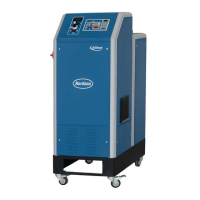
